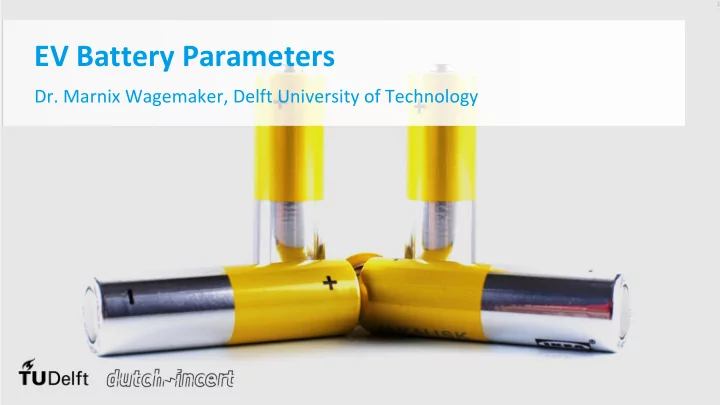

EV Battery Parameters Dr. Marnix Wagemaker, Delft University of Technology
Working principle • Three main components ⁃ Anode (-) ⁃ Cathode (+) ⁃ Electrolyte • Electrochemical driving force • Battery voltage
Working principle Only ions cross electrolyte • Electrical current • Ions in (+) electrode • → Fully discharged
Battery performance parameters Important parameters: Capacity • • State of charge (SOC) Coulombic efficiency • Energy Content • Energy Density • Cycle life • C-rate •
Voltage at discharge • Low discharge current • Slow decrease in voltage • Weakly bonded ions first
Capacity • Amount of charge stored • Unit of charge is Coulomb • 1 electron charge = 1.6E-19 C • Ampere = Coulomb/seconds • 1 Ampere hour = 3600 C
Charging after discharge • Voltage increase until fully charged • Similar shape as discharge • State of charge (SOC)
Battery efficiency • Coulombic efficiency • Indication for side reactions • Energy efficiency
Energy content • Voltage times capacity • Area under curve • 1 Watt hour = 3600 Joules
Energy Density • Per weight or per volume • Gravimetric (Wh/kg) • Volumetric (Wh/L)
Cycle life • Capacity fading • 80% of initial capacity • End of life time
C-Rate • C/X rate in hours • Higher C-rates, higher currents • Lower efficiency
C-Rate • Internal resistance • Lower effective capacity • More capacity fading
Ragone plot • Higher specific power • Lower specific energy • Trade-off • Energy vs. power
Thanks for your attention
Recommend
More recommend